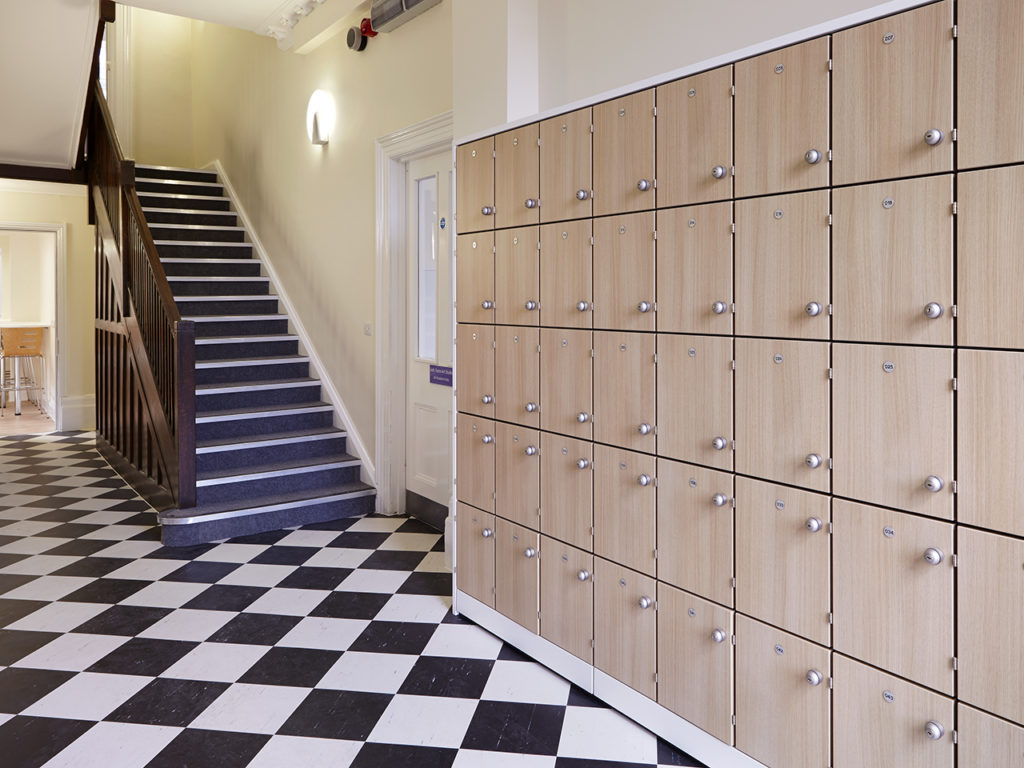Locker systems are an essential part of the furniture for many workplaces, schools and colleges. But if you require new lockers for your institution, should you go for digital or manual lockers? And which type of digital locker system is most suitable?
Find out more about the features of each system, and whether a digital locker or manual locker system is right for you.
Mechanical locker systems
Mechanical or manual lockers are the old-style kind that you might remember from swimming pools and changing rooms of your youth. With a simple, lock-and-key mechanism, their operation just requires the user to turn the key and remove it. Many manual locker systems require the insertion of a coin in order to release the key.
Benefits:
Often cheaper and more cost-effective than digital lockers.
Simple for users to own a locker and return to the same storage space multiple times in a day.
Disadvantages:
Locks, although secure for general use, don’t have the highest level of security.
Keys can be lost or stolen.
Shared access to lockers isn’t practical; if changing over halfway through the day, users would have to physically hand over their key when swapping lockers.
More space is required to house individual lockers for staff or students.Digital locker systemsA technological advance on manual locker systems, digital lockers offer many invaluable security features that may be attractive for your workplace or school.
There are two main types of digital locker: standalone lockers that each have their own electronic keypad code, and interlinking locker systems that can be activated by a fingerprint reader, digital key fob or chip and pin card.
Standalone digital lockers
Digital lockers with a standard keypad are assigned a specific PIN-style code for each locker. If you know the code, you can access the locker.Benefits:
They are tamper-proof and offer a higher level of security.Eliminates the issue of lost or stolen keys.Disadvantages:PIN codes can be forgotten, so measures need to be put in place for accessing the locker if and when this happens.Locker sharing still isn’t practical; the same issue remains whether using digital or manual lockers. So for example, if one pupil or employee uses a locker and vacates it after lunch, the only way for another student or employee to make use of the same locker is to learn the code to access it.Interlinking locker systemsAn interlinking digital locker system is one step up from the standalone digital systems. With an interlinking system, the whole bank of lockers becomes agile, so individual lockers can be shared by multiple users with maximum security.
Benefits:
Locker sharing becomes practical and secure. Simply pick a spare locker whenever you need it, link it to your fingerprint or card. Until you free up the locker, nobody else can gain access (other than an administrator who could override the system if required). Then, when you have finished using the locker, it would be free for another student or employee to come along and use, assigning his/her finger or card as the ‘key’ for the required duration.
Disadvantages:
This is a pricier option than either standalone digital or manual lockers.How to decide on the right locker system for youThe choice between digital or manual lockers and standalone systems versus interlocking digital locker banks really comes down to how the lockers will be used day-to-day.If cost is an issue, you have the available space, and security does not need to besuper-high, manual lockers could be a great option for your school or workplace.If it’s a choice between standalone or interlinked digital locker systems, consider whether locker sharing is likely to be a common practice in your institution.
Envoplan areable to install both digital and manual lockers during the office and school refurbishment process. The bespoke design of our lockers means that they can fit into any space. Simply add your company branding to the lockers and choose from a range of colours and a variety of finishes



